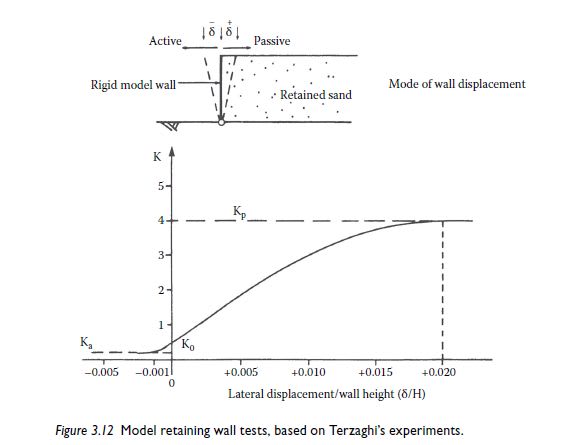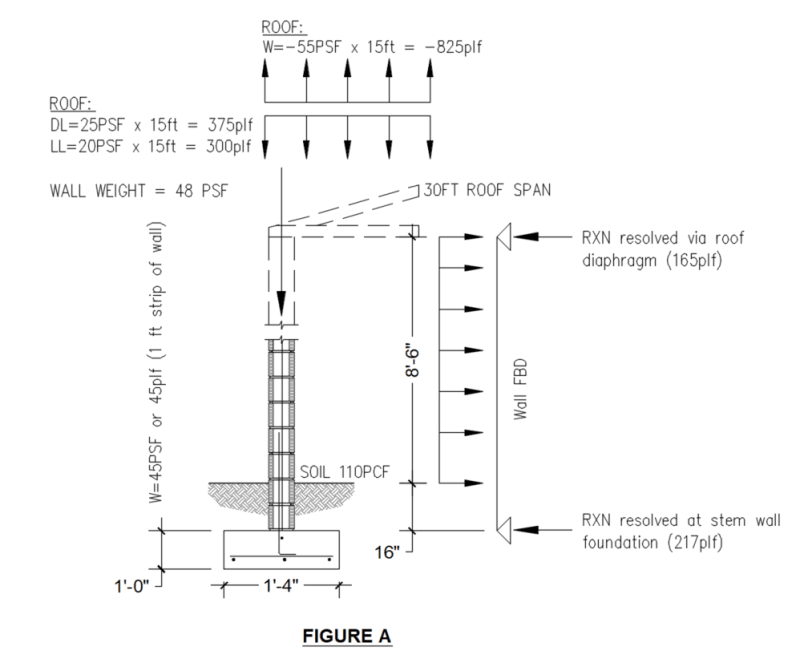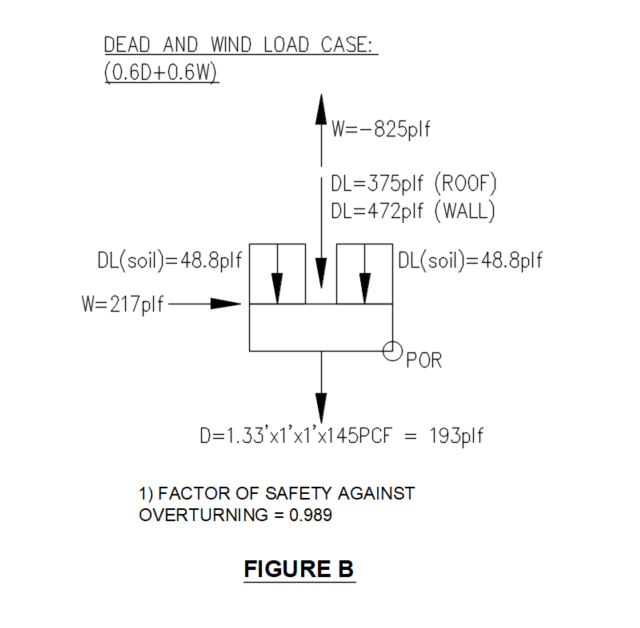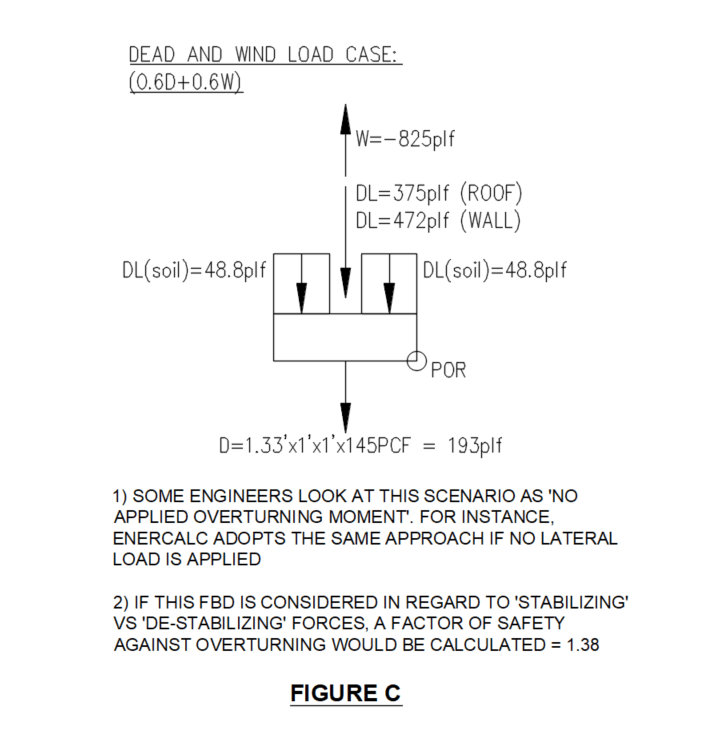When designing your stem wall footing (full height CMU walls), is it OK to allow passive soil pressure to resist lateral loads on wall footings (thus eliminating the force vector that causes lateral overturning). I'm fully aware of how to determine Uplift FOS, OT FOS, and Sliding FOS. My question is whether or not it's acceptable to use passive pressure to alleviate some of the applied OT on the footing. As you can guess, my current procedure considers full lateral loads (Using Enercalc)
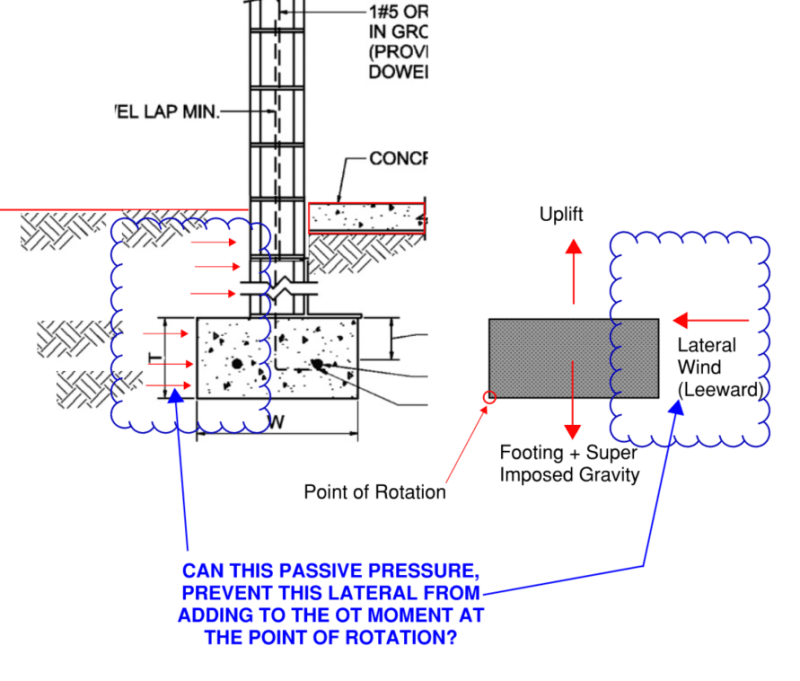
I know that passive pressure is typically used to resolve sliding. However, with my combination of uplift and lateral loads, both of these are de-stabilizing moments and when combined cause my footings to increase in width and thickness. It's become hard to justify these wider footing sizes when the competition is getting by with small footings.
My only assumption is that I have to alleviate some of the loads within the FBD. If you look in the prescriptive sections of the IRC, in my case I'm looking at Florida's adoption, 2020 FBC, Residential 7th edition (Section R403), you'll find ridiculous size footings being specified (such as a 12"wide by 6" thick footing). I'm wondering how they ever get these to work with combined de-stabilizing moments. I don't actually use these tables, I prefer to calculate my own footings.
Also, I'm aware that the residential codes tell you not to worry about uplift when using CMU walls. So if you're so inclined to follow this rule, my question about passive soil pressure still stands.

I know that passive pressure is typically used to resolve sliding. However, with my combination of uplift and lateral loads, both of these are de-stabilizing moments and when combined cause my footings to increase in width and thickness. It's become hard to justify these wider footing sizes when the competition is getting by with small footings.
My only assumption is that I have to alleviate some of the loads within the FBD. If you look in the prescriptive sections of the IRC, in my case I'm looking at Florida's adoption, 2020 FBC, Residential 7th edition (Section R403), you'll find ridiculous size footings being specified (such as a 12"wide by 6" thick footing). I'm wondering how they ever get these to work with combined de-stabilizing moments. I don't actually use these tables, I prefer to calculate my own footings.
Also, I'm aware that the residential codes tell you not to worry about uplift when using CMU walls. So if you're so inclined to follow this rule, my question about passive soil pressure still stands.

